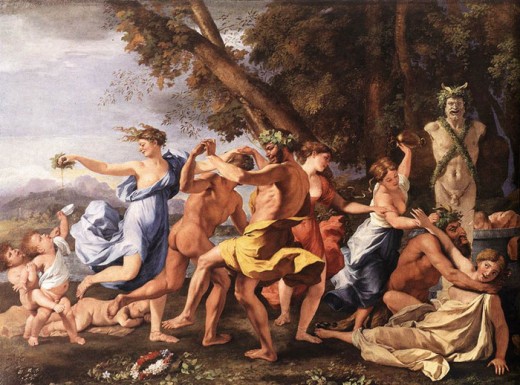Valentine’s Day: A Bruised History

I realize that it’s Valentine’s Day on Sunday. So here’s my advice to you all: Don’t go overboard.
After many years working in bars/restaurants throughout college, I can tell you that there is no way to win—it’s either too much, or not enough. And if you get it right, you’d better keep up the momentum next year. (To the right person, it doesn’t matter anyway.) Yes, get some flowers. Sit down and eat with each other. All of those things are really nice, on any day of the week. But relax on the watch-buying and the spa-sending and save those special treats for a real occasion—rather than a superficial holiday literally drudged up by Hallmark. Besides, the history of how Valentine’s Day came to be is far from romantic. It’s more along the lines of violent and lusty, if you really want to get into it.
According to npr.org, Valentine’s Day started off a little like this: a bunch of Romans would get together once a year for something called the Feast of Lupercalia, which was a celebration meant to expel evil spirits and cleanse the city—meaning, obviously, that it was a giant, lusty nude fest where people would be coupled up, and women would line up in droves to be hit (yes, hit) by men, as everyone thought that was a way to increase fertility. If you’d like a particularly lively visual, consider this quote from the site: “From Feb. 13 to 15, the Romans celebrated the feast of Lupercalia. The men sacrificed a goat and a dog, then whipped women with the hides of the animals they had just slain.” Sounds like a good old time.
As for the name Valentine? Well, Roman Emperor Claudius II took the lives of several men by that name on February 14th (albeit on different years), the most notable of which was a holy priest named Valentine. Claudius needed more soldiers, and blamed the lack of enrolment on men not wanting to leave their families. As a result, he banned marriages and engagements. Valentine didn’t agree, and continued to marry couples in secret, resulting in his execution. After that, the Catholic Church got right in there and made him a martyr, dubbing the day St. Valentine’s. (The Catholic Church has since dropped the day off the Roman calendar, citing a lack of historical information.)
Later on, a 5th century Pope got involved, deciding to combine the lusty feast and V-day, making it one big day of raunchy fun, albeit with more clothing. Writers like Chaucer and Shakespeare got into it, loving up the occasion, which only lent the day more popularity, especially in Britain. And in 1913, corporate giant Hallmark jumped on the bandwagon and started bulk-producing V-day cards, putting us in the jam we find ourselves in today. And we’ve bought into it—in 2013, love-related sales on the big day topped 17.6 billion dollars.
So there’s your history. Not really something to start getting all lovey-dovey about, is it? So grab some daisies, and sit down for a meal together. But please leave the grand gestures at home—Valentine’s Day really isn’t that romantic, if you break it down.